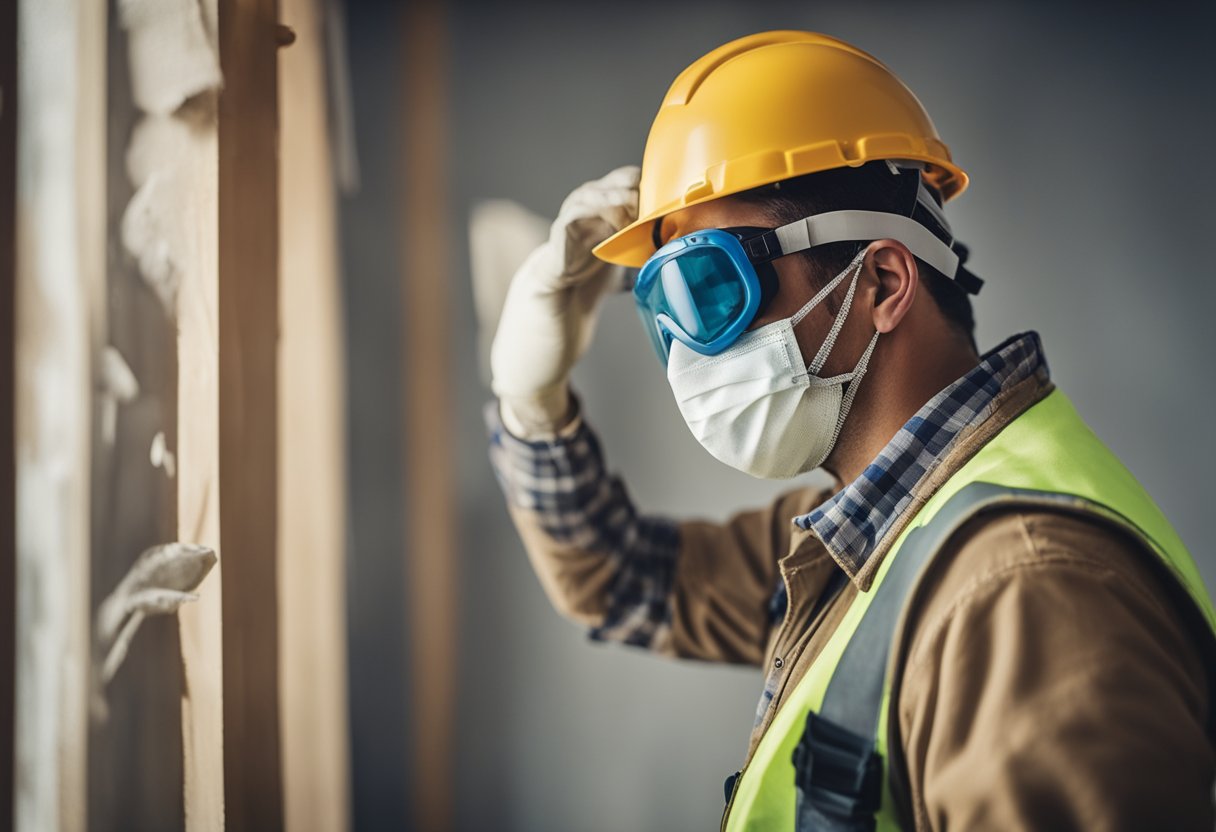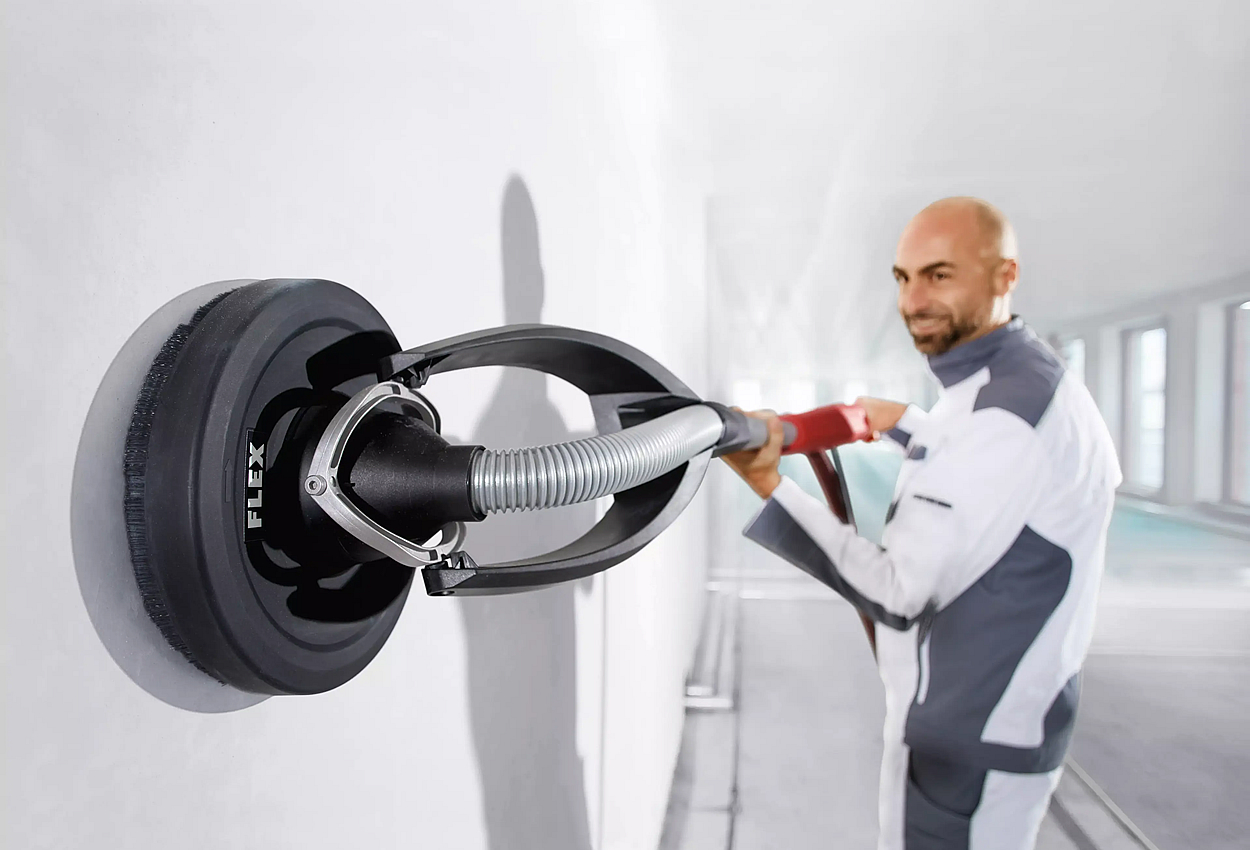Tool Tips
-
17 FebRead more »
Installing a suspended ceiling transforms spaces by hiding unsightly pipes and wiring while creating a clean, professional look. A successful installation starts with having the right equipment ready before you begin the project.

To install a suspended ceiling, you need basic tools like a tape measure, spirit level, utility knife, screwdriver, and safety equipment including goggles and gloves, plus materials such as ceiling tiles, main tees, and cross tees. The perimeter trim and suspension wires are crucial components that provide support and create a professional finish.
Key Takeaways
- Proper safety equipment and measuring tools ensure precise, secure installation
- Quality
-
10 DecRead more »
Power tools can make DIY projects faster and easier. A well-stocked toolkit can help homeowners tackle a wide range of tasks. Every DIY enthusiast should have a cordless drill, circular saw, and sander as their core power tools.

These versatile tools form the foundation for most home improvement projects. A cordless drill is perfect for driving screws and making holes. A circular saw cuts through wood and other materials quickly. A sander helps smooth surfaces and prepare them for painting or finishing.
Adding a few more specialised tools can expand your DIY
-
10 DecRead more »
Plastering ceilings can transform a room, giving it a smooth and polished look. It's a skill that takes practice, but with the right tools and techniques, you can achieve great results. The key to success is careful preparation, proper mixing of materials, and patient application.

Many DIY enthusiasts choose to plaster their ceilings to hide imperfections or create a fresh canvas for paint. The process involves applying a base coat of plaster, followed by a finishing coat to create an even surface. While it may seem daunting at first, breaking it down into steps makes it more manageable.
Before starting, it's crucial to gather all the necessary materials and prepare the work area. This includes protecting the floor and furniture,
-
5 NovRead more »
Drylining and drywall fixings play a critical role in modern construction, offering an alternative to traditional methods. Each type of fixing, from hollow wall plugs to plastic toggles, has its unique strengths and weaknesses. Choosing the right fixing can affect both the strength of the installation and the ease of use for the builder.

There are many factors to consider when selecting the appropriate fixing. Some fixings are designed to hold loads as light as a few kilograms, while others can support up to 100 kg. These choices significantly impact the durability and functionality of a space. This post will explore the different types of fixings and help readers understand the best applications for each.
The type of wall also influences the choice of fixings. For example, stud walls often use different fixings than solid walls since they each have different support requirements. Readers will learn that understanding the wall structure can ensure that the chosen fixing provides optimal results.
Key Takeaways
- Selecting the right fixing is crucial for strength and ease of installation.
- Wall type determines which fixings are best suited.
- Proper fixing choice ensures durability and functionality.
Essentials of Drylining and Drywall Fixings
Drylining and drywall fixings are crucial components in modern construction. They offer flexibility and strength in building interiors, supporting different types of loads depending on the fixing used. Understanding their roles and selecting the right ones is essential for effective installation.
Definition and Importance
Drylining is a construction technique that involves attaching plasterboard to a surface such as a wall or ceiling. It's a preferred choice in building construction due to its quick installation process and minimal mess compared to traditional plastering. The versatility of drylining makes it suitable for creating partitions and enhancing acoustic or thermal insulation. Drywall fixings, on the other hand, are hardware elements used to attach the plasterboard securely. They allow for the hanging of various objects on the wall, ranging from light picture frames
-
5 NovRead more »
Sanding drywall is a crucial step in achieving smooth, flawless walls ready for painting. Whether you're tackling a DIY project or honing your professional skills, knowing the right techniques and tools can make all the difference. Power sanding and hand sanding are both effective methods for smoothing drywall, with each having its own advantages depending on the size of the area and the level of detail required.

Choosing the right equipment is essential for efficient drywall sanding. For small areas or touch-ups, hand sanding with a sanding block or sponge can provide precise control. Larger surfaces may benefit from power
-
8 OctRead more »
Plasterboard has become an essential material in construction and home renovation. It's widely used due to its versatility and practical benefits, which make it suitable for a range of applications. From standard interior walls to specialised uses, plasterboard is a staple in the building industry.

Why is plasterboard so prevalent in modern construction? Understanding its features and benefits can provide insight into its widespread use. This article aims to explore ten interesting facts about plasterboard, shedding light on why it's a go-to choice for builders and DIY enthusiasts alike.
1) Plasterboard is Also Known as Drywall
Plasterboard, commonly referred to as drywall, is a popular building material used for creating interior walls and ceilings. It
-
2 SepRead more »
Plastering a ceiling might seem like a daunting task, but with the right tools and techniques, it can be a manageable DIY project. The most important tools you'll need include a plasterer's hawk, trowel, bucket trowel, and a mixing paddle. These tools help you apply plaster evenly and efficiently, reducing waste and ensuring a smooth finish on your ceiling.

Before you start plastering, it's crucial to prepare the ceiling surface. Check for
-
2 SepRead more »
Working with drywall can be a challenging task, whether for a home renovation or a professional construction project. Having the right tools is crucial for achieving the best results and making the job easier and more efficient. Drywall tasks involve cutting, hanging, and finishing the material, requiring a variety of specialised tools.

The following list introduces the essential tools needed for drywall work. Understanding these tools can help streamline the process, reduce errors, and ensure a smooth, high-quality finish. With the correct equipment, even complex drywall projects can be managed effectively.
1) Stanley FatMax Utility Knife
-
26 JulRead more »
Plastering and installing drywall are tasks that require the right gear to stay safe and work efficiently. Wearing the correct workwear and personal protective equipment (PPE) is essential. This includes items like safety glasses to protect your eyes from dust and debris, and sturdy gloves to shield your hands.

Loose clothing is a no-go as it can get caught in tools or materials. A long-sleeve shirt and durable trousers are advisable, offering both protection and flexibility. For footwear, steel-toe boots are a good choice to safeguard against heavy objects falling on your feet.
-
26 JulRead more »
Drywall sanding is an essential step to achieving a smooth surface for painting or wallpapering. Having the right tools and understanding proper sanding techniques can turn a tedious task into a manageable one. Whether you are dealing with large surfaces or intricate corners, knowing how to approach each part of the process will make a big difference in the finish quality and your efficiency.

Key tools you’ll need include a hand sander, sanding sponge, and various grit sandpapers. Equipping yourself with safety gear like dust masks and goggles is also critical to avoid inhaling harmful dust particles. Simple preparations such as laying down drop cloths and sealing off work a